Conditional probability
Introduction to Statistics

George Boorman
Curriculum Manager, DataCamp
Multiple meetings
Sampling without replacement
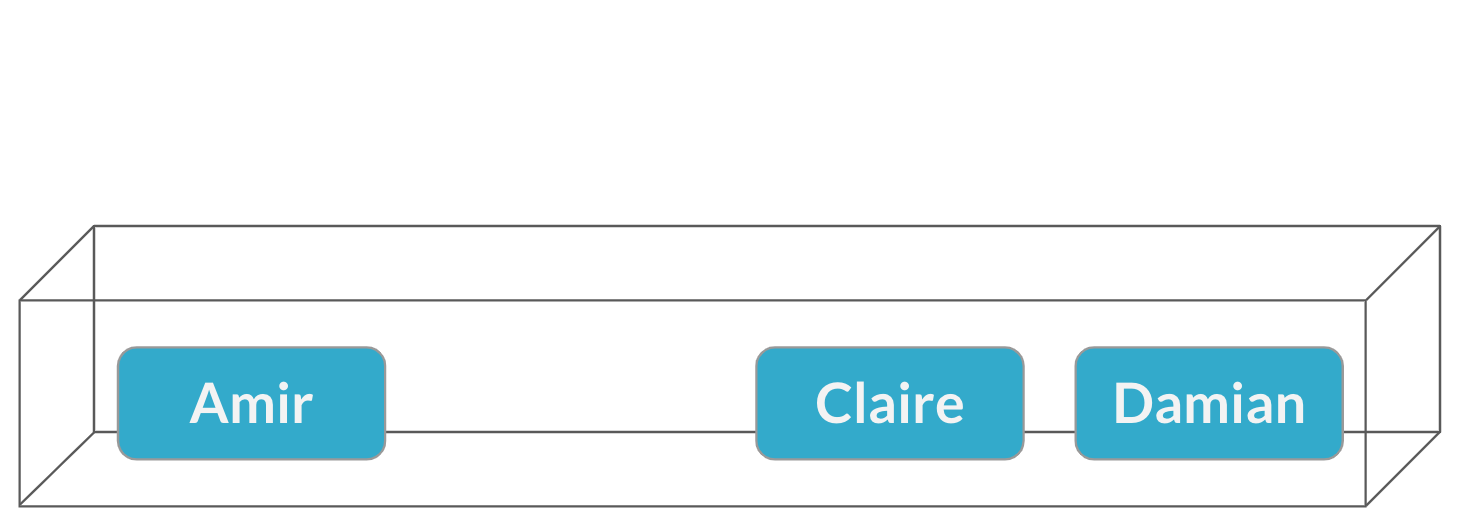
Multiple meetings
Sampling without replacement
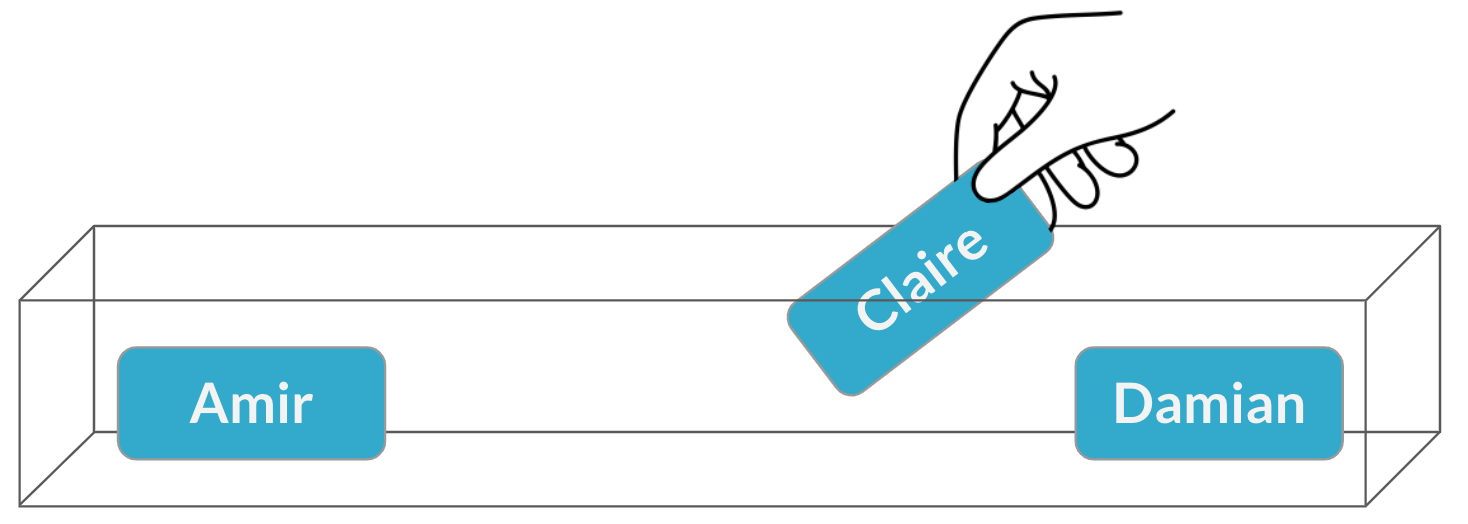
$$P(\text{Claire}) = \frac{1}{3} = 33\%$$
Dependent events
Probability of the second event is affected by the outcome of the first event
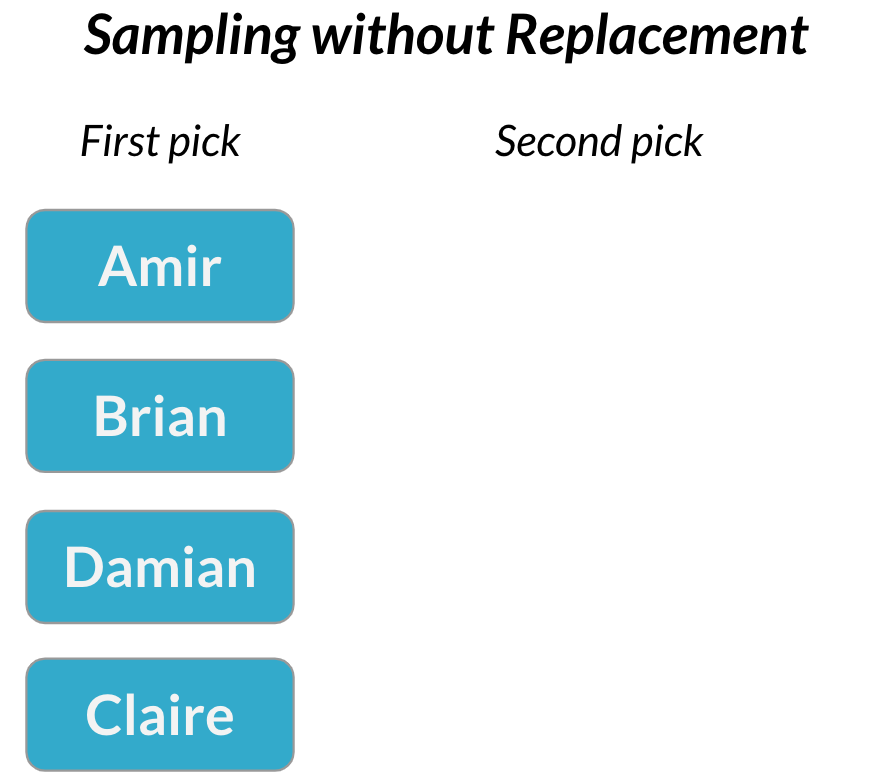
Dependent events
Probability of the second event is affected by the outcome of the first event
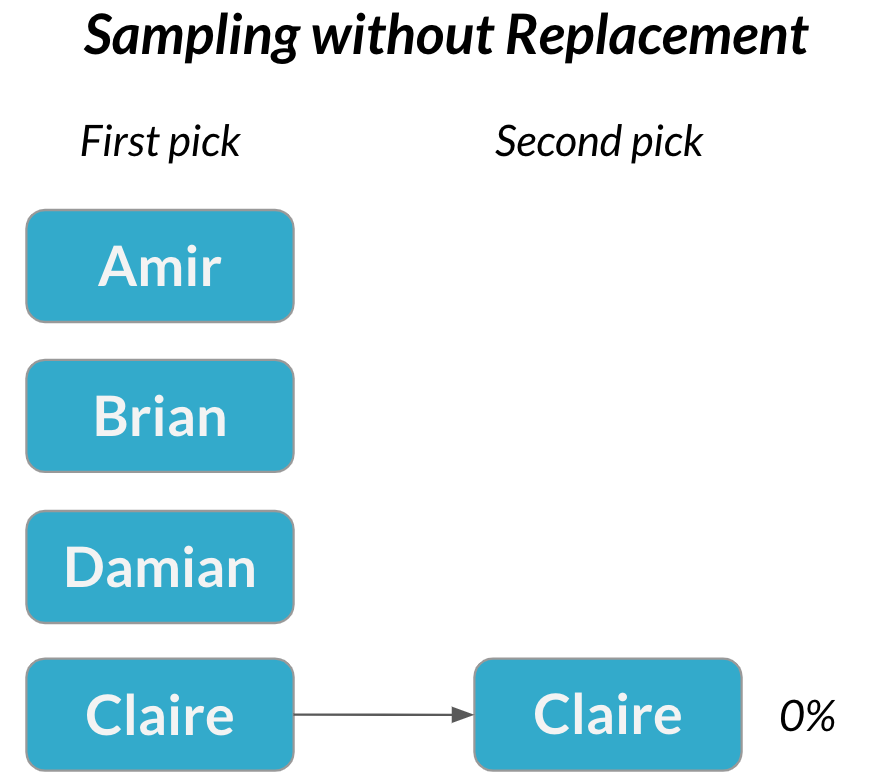
Dependent events
Probability of the second event is affected by the outcome of the first event
Sampling without replacement = each pick is dependent
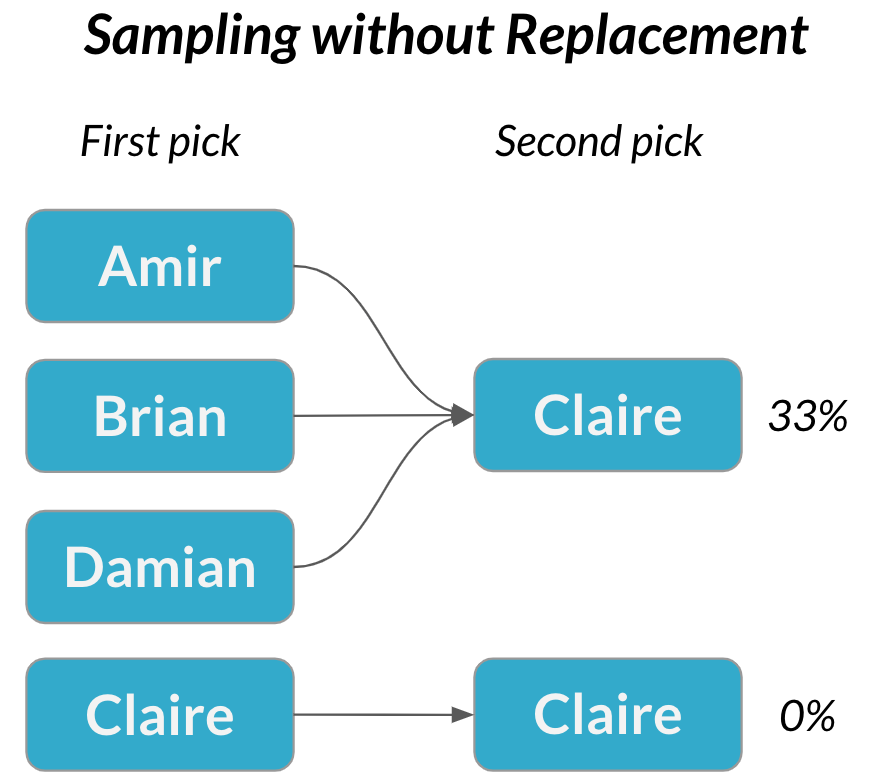
Conditional probability
Conditional probability is used to calculate the probability of dependent events
- The probability of one event is conditional on the outcome of another

Venn diagrams
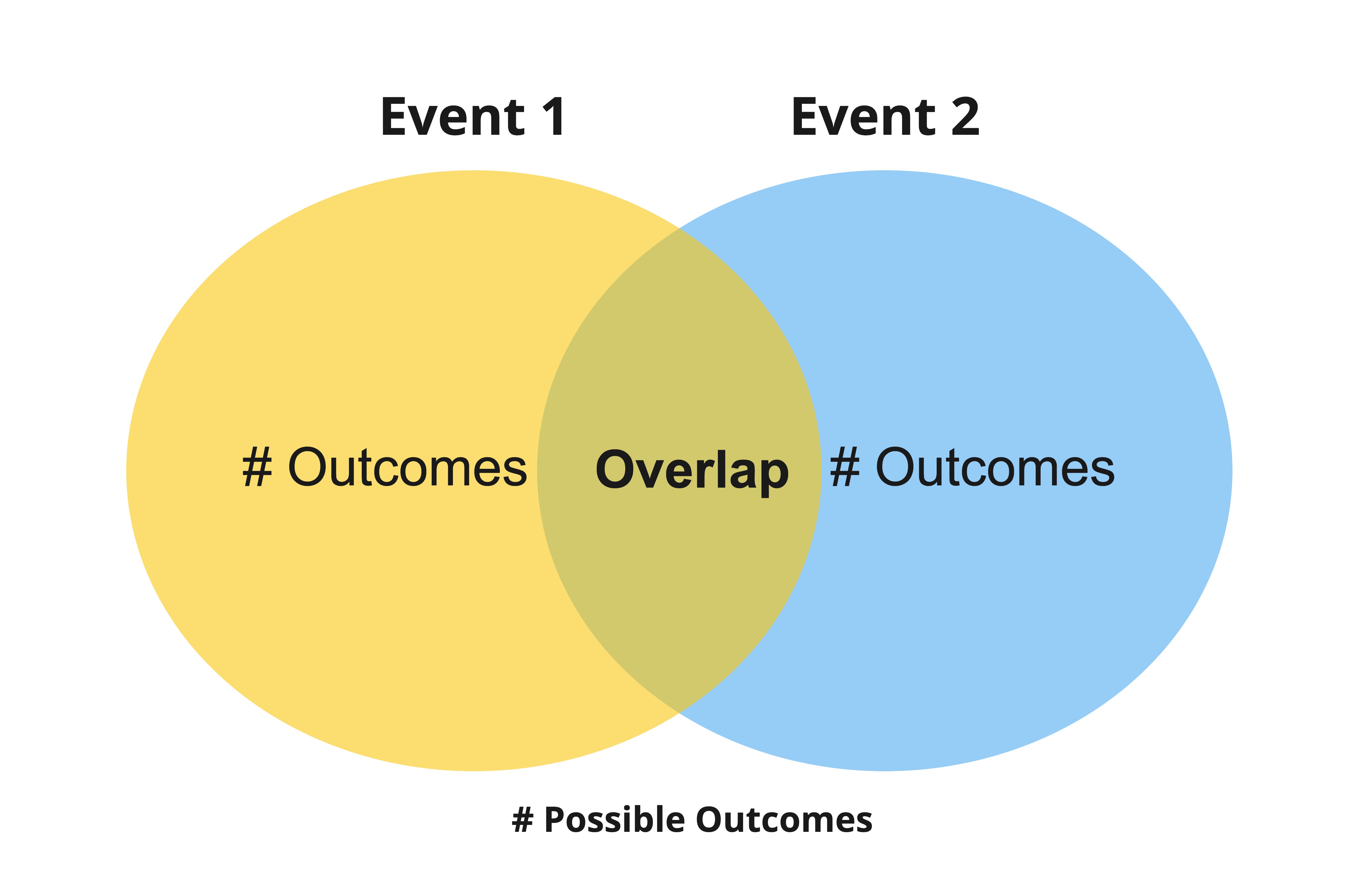
Kitchen sales over $150
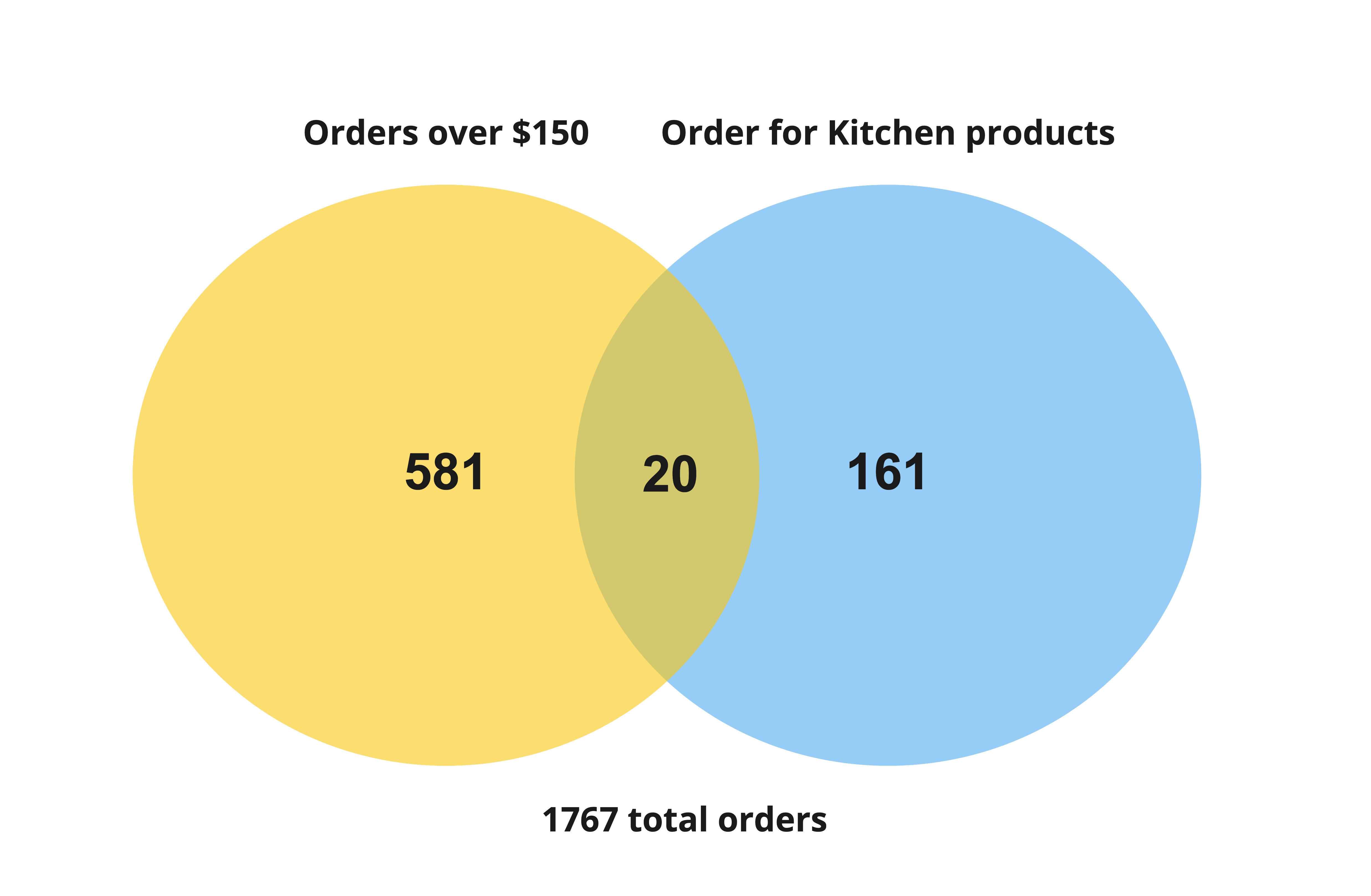
Kitchen sales over $150

$$P(Order > 150 | Kitchen) = \frac{\frac{20}{1767}}{\frac{181}{1767}}$$
$$P(Order > 150 | Kitchen) = \frac{20}{181} $$
The order of events matters
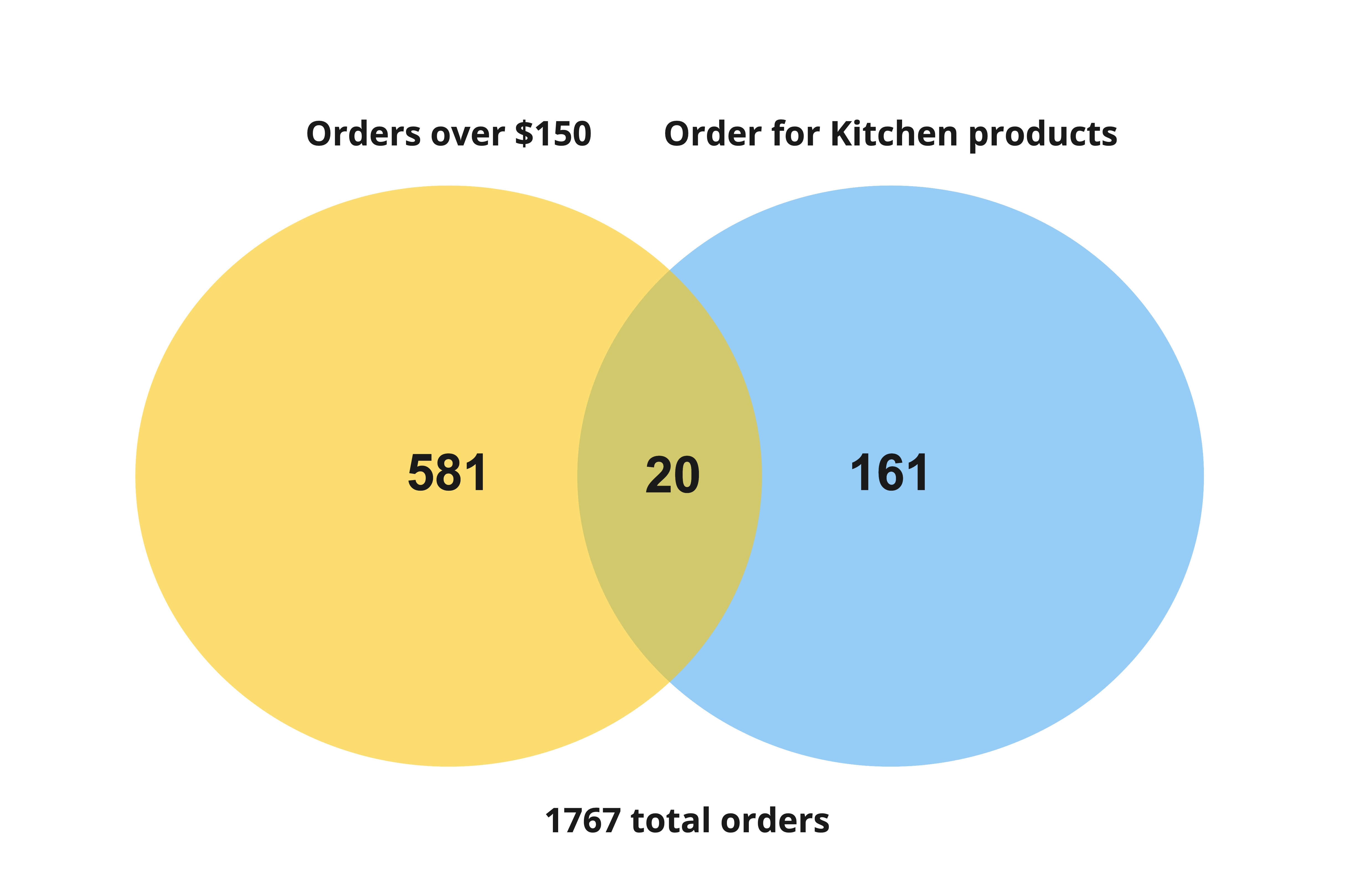
$$P(Kitchen | Order > 150) = \frac{\frac{20}{1767}}{\frac{601}{1767}}$$
$$P(Kitchen | Order > 150) = \frac{20}{601} $$
Conditional probability formula
$$P(A | B) = \frac{{P(A \ \cap \ B)}}{{P(B)}}$$
$P(A | B)$ → Probability of event A, given event B
$P(A \ \cap \ B)$ → Probability of event A and event B
- Divided by the probability of event B → $P(B)$
Let's practice!
Introduction to Statistics

